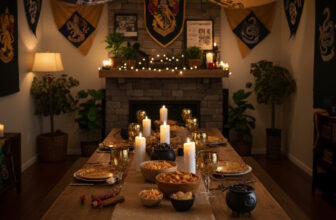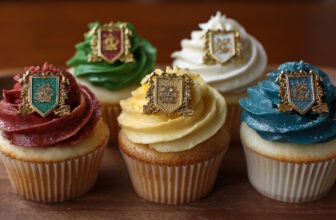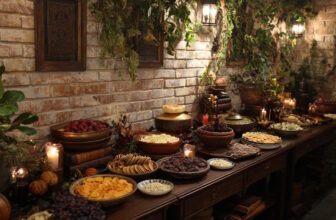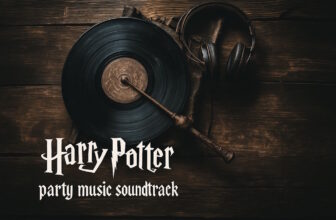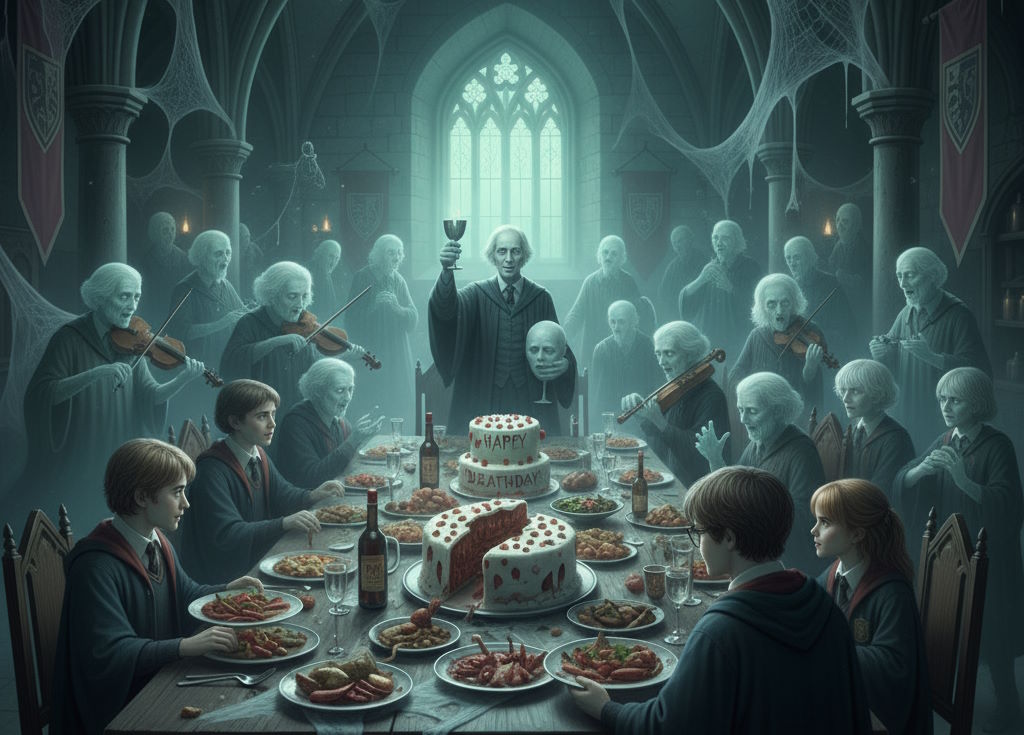
When most people think of parties in the wizarding world, they imagine the extravagant Yule Ball, raucous Quidditch victory feasts, or the warm chaos of a Weasley family gathering. But there’s another, much darker — and lesser-known — form of celebration hidden within the ghostly corners of Hogwarts: the Deathday Party. A uniquely magical event, the Deathday Party is both eerie and oddly touching, giving us rare insight into the afterlife of witches and wizards who choose to remain behind as ghosts.
Let’s dive into this chilling but fascinating tradition, explore its role in the Harry Potter universe, and uncover how it reflects the deeper magical culture created by J.K. Rowling.
What Is a Deathday Party?
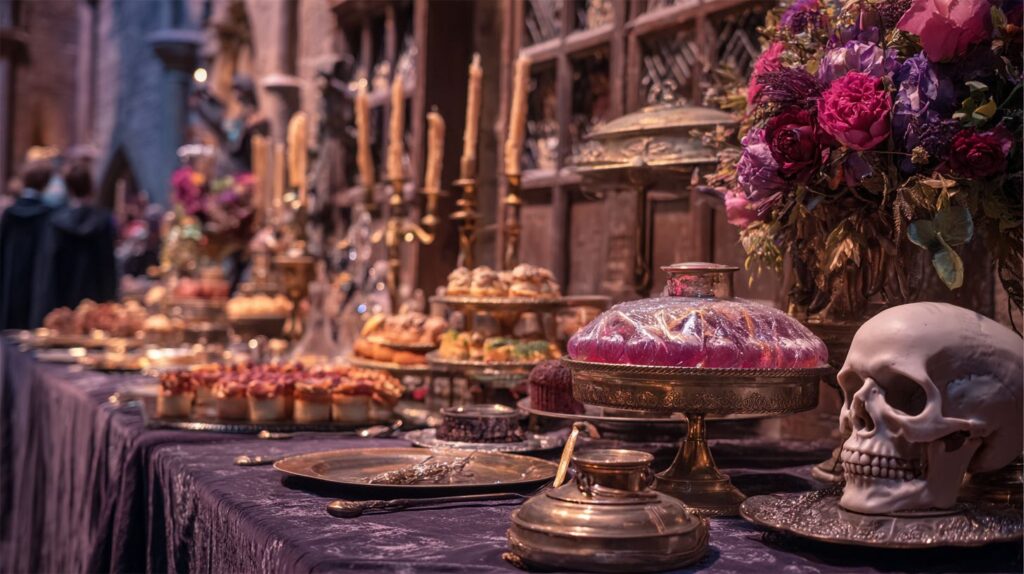
A Deathday Party is the ghostly equivalent of a birthday party. Instead of celebrating the day someone was born, it marks the anniversary of the day they died. It’s a concept unique to the wizarding world and was introduced in Harry Potter and the Chamber of Secrets when Harry, Ron, and Hermione attend the 500th Deathday Party of Sir Nicholas de Mimsy-Porpington, more commonly known as Nearly Headless Nick.
Ghosts who remain in the world of the living often commemorate their deathdays with gatherings that mimic the parties they once enjoyed in life — albeit with a macabre twist.
The Setting: Nearly Headless Nick’s 500th Deathday
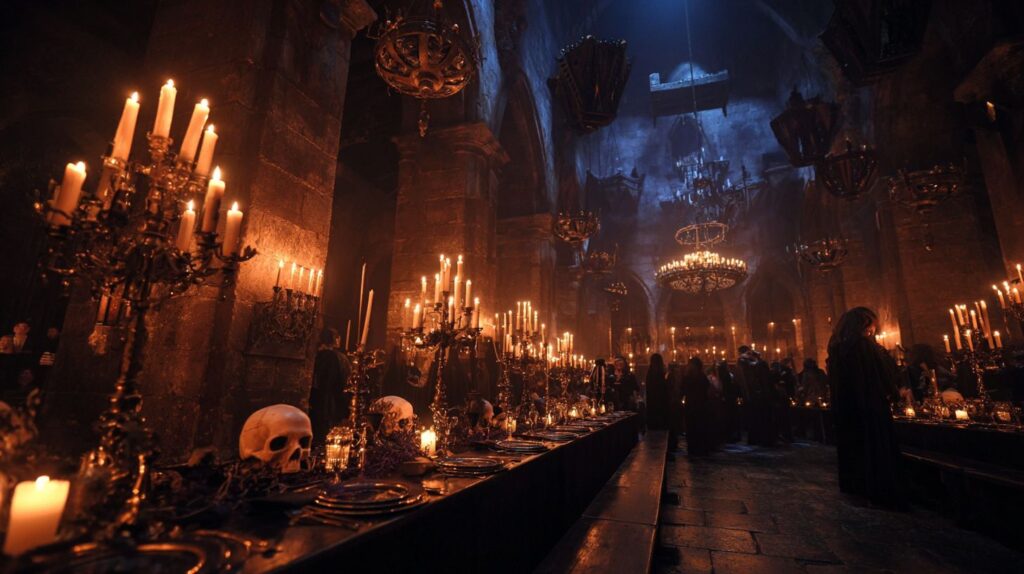
On October 31st, the same night as the Hogwarts Halloween feast, Harry and his friends forgo the usual celebration to attend Nick’s milestone 500th Deathday Party. The event is held in one of the castle’s dungeons, an appropriately gloomy setting for a gathering of the dead.
As they step into the cold, candle-lit room, the trio finds themselves surrounded by a dense crowd of ghosts, eerie music from a ghostly musical saw, and long, rotten banquet tables laden with decomposing food — which ghosts float through in hopes of tasting the faintest memory of flavor.
The room is filled with chilling details: moaning music, spectral decorations, and bone-chilling drafts. This isn’t a party in the traditional sense — it’s a social ritual among the dead, layered with gothic humor, sorrow, and a kind of somber nostalgia.
The Guest List: Who Attends a Deathday Party?
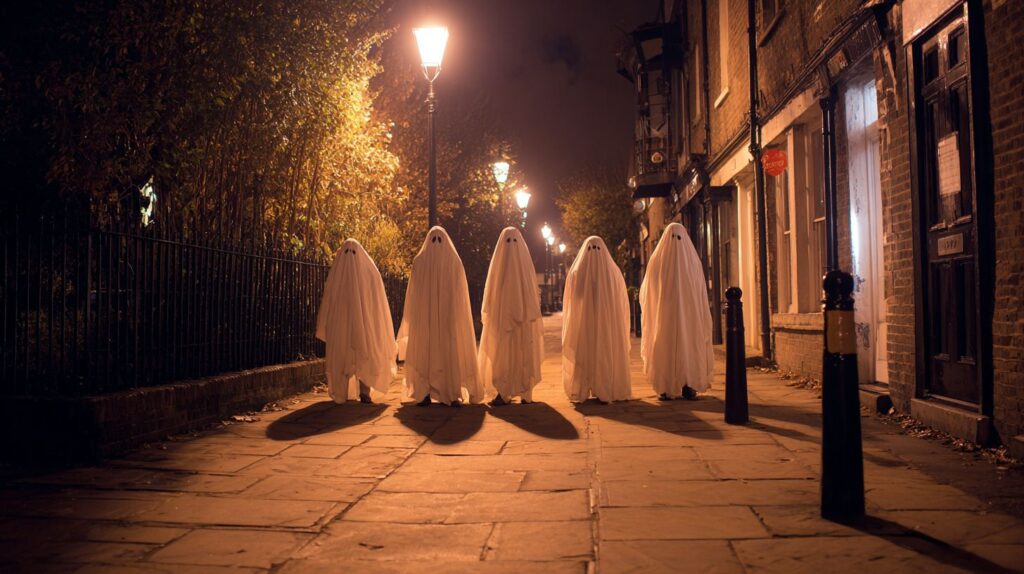
The guest list at Nick’s party includes a veritable who’s-who of the Hogwarts ghost world. Among them:
- The Fat Friar, Hufflepuff’s kind-hearted house ghost
- The Bloody Baron, the menacing and silent Slytherin ghost
- The Grey Lady, the quiet and mysterious ghost of Ravenclaw
- Moaning Myrtle is notably absent, but she represents a similar category of young ghosts who died tragically
- A ghostly Headless Hunt, led by the arrogant Sir Patrick Delaney-Podmore, who taunt Nick for his “nearly” headless condition
The party’s attendees also include various lesser-known spirits, including monks, ladies in ruffs, and a host of transparent partygoers.
This scene allows readers a rare glimpse into the society of ghosts — with its own hierarchies, politics, and internal tensions. For instance, Nick’s ongoing frustration with being excluded from the Headless Hunt because his head isn’t completely severed is both humorous and a metaphor for his incomplete status among his peers.
Symbolism Behind the Deathday Party
The Deathday Party is more than just a spooky scene added for Halloween flavor. It serves several narrative and symbolic purposes in the book:
1. Exploring the Afterlife in the Wizarding World
The Harry Potter series rarely deals explicitly with the afterlife, but through ghosts and events like the Deathday Party, we get hints about how the magical world handles death and memory. Ghosts choose to stay behind due to unresolved issues or fear of the unknown — and these parties show their lingering ties to the living world.
2. Themes of Identity and Belonging
Nick’s insecurity about not being accepted into the Headless Hunt reflects larger themes in the book — about identity, feeling “not enough,” and trying to find your place. His desire to be fully headless is absurd on the surface but deeply relatable at its core.
3. Contrast with the Living
The grim and ghostly Deathday Party starkly contrasts the vibrant Halloween Feast happening elsewhere in the castle. It’s a reminder of mortality and how memory is honored differently — and it also adds a touch of dark humor to the book.
Food and Festivities — But For Ghosts
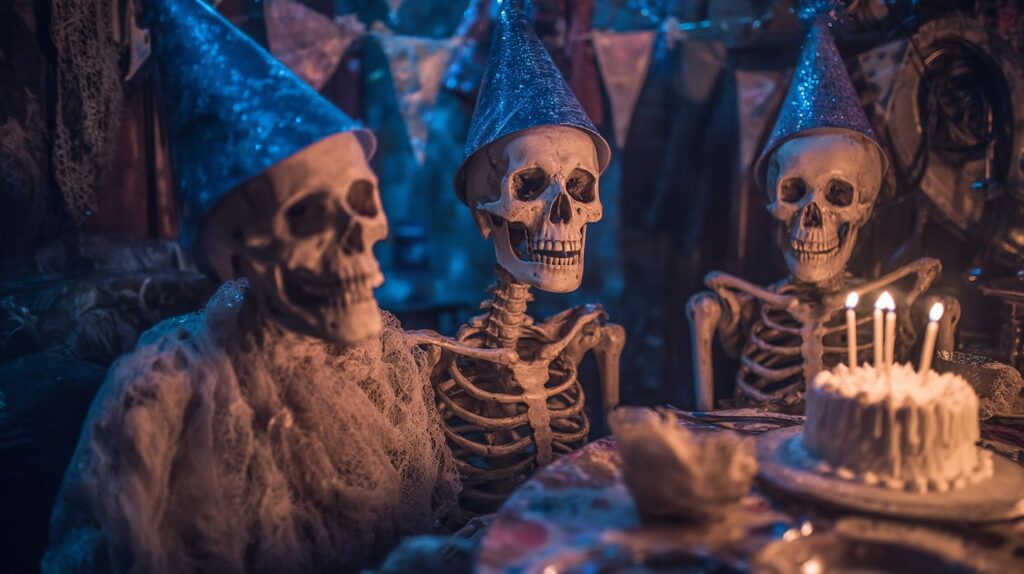
The food at a Deathday Party is one of the eeriest elements. Described as “large, rotten fish, burnt cakes, and moldy haggis,” these are not for human consumption. They’re there so ghosts can float through them, attempting to “taste” them. It’s a pathetic and strange mimicry of the human experience — a tragic echo of pleasures they once enjoyed.
Ghosts don’t eat, drink, or dance the way the living do. Instead, their “fun” is more about remembrance than indulgence. The party is less a celebration and more of a mourning ritual cloaked in ritualistic festivity.
What the Deathday Party Tells Us About Ghosts
Ghosts in the Harry Potter universe are not just spooky decorations or plot devices — they are characters with personalities, regrets, and histories. The Deathday Party humanizes them (ironically), reminding us that behind each ghostly figure is a story left unfinished.
Nick’s tragic backstory — having botched his own execution — is laced with both humor and sadness. He was hit forty-five times with a blunt axe before dying, and the party commemorates this horrible moment with a kind of grim pride.
We also see that ghosts form communities, celebrate anniversaries, have rivalries, and even hold social status. It adds rich texture to the magical world and reinforces Rowling’s knack for world-building.
Could You Throw a Deathday Party in Real Life?
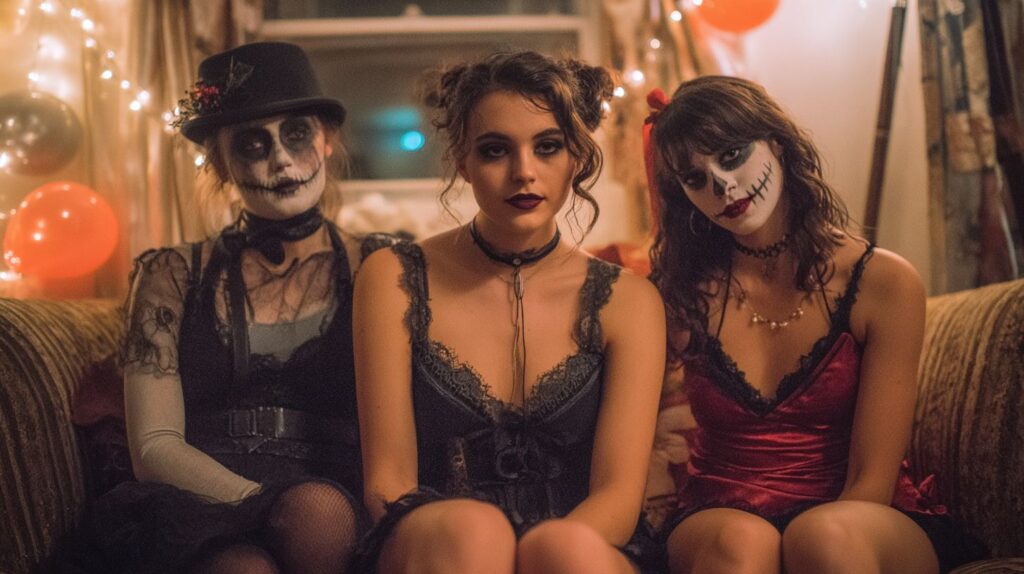
If you’re a Harry Potter fan with a love for the macabre, why not throw your own Deathday-inspired party — especially around Halloween?
Here are a few ideas for a Deathday-themed Harry Potter party:
Decorations:
- Low lighting and candlelight to mimic dungeon ambiance
- Fog machines and gothic decorations
- Transparent fabrics to simulate ghostly figures
Food & Drinks:
- Serve “rotten-looking” treats (think chocolate cupcakes with “moldy” green frosting)
- Create cocktails with dry ice for a ghostly fog effect
- Use edible glitter and dark berries to create haunting beverages
Activities:
- “Ghost stories” competition
- Play ghost trivia from the Wizarding World
- Host a mock “Headless Hunt” game
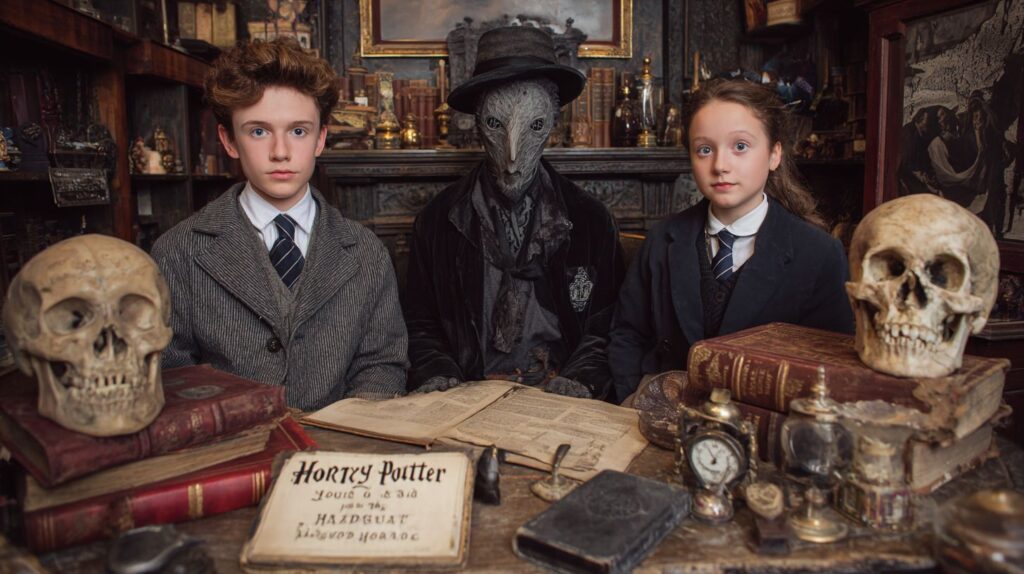
It’s a fun way to bring a rarely explored part of the Harry Potter universe to life — with spooky charm and fandom flair.
Why the Deathday Party Is So Memorable
While the Deathday Party only appears briefly in The Chamber of Secrets, it leaves a lasting impression. It’s quirky, gothic, and refreshingly different from the usual magical wonder we associate with Hogwarts. Instead of wands and spells, we get moldy food and moping ghosts — and yet, it fits perfectly within the world Rowling has built.
It reminds us that in the wizarding world, even death has its traditions, its politics, and its peculiar sense of celebration.
Final Thoughts
The Deathday Party may be overshadowed by the grander events of the Harry Potter saga, but it offers something unique: a peek into the emotional afterlife of witches and wizards. It blends humor, horror, and heart — making it one of the most quietly profound moments in the series.
So next time October 31st rolls around, and you’re choosing between pumpkin juice and Polyjuice, consider raising a glass to Sir Nicholas and the countless spectral partygoers still haunting Hogwarts’ hallowed halls.
After all, even the dead deserve a party now and then.


